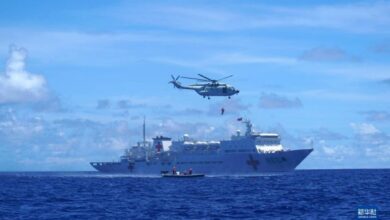Why Central America Football Qualifiers Outshine South American Routine

With a bloated World Cup drawing ever closer, South America’s qualifiers already feel wrapped in bubble wrap, while across Mexico and Central America, every loose pass and wayward bounce still carries the weight of an entire nation’s future.
A Continent on Cruise Control
Tuesday night in Asunción offered a perfect snapshot of CONMEBOL’s new, almost luxurious reality. Brazil, mathematically safe weeks ago, trotted out a half-strength XI, yet a single Vinícius Júnior step-over and finish settled matters against Paraguay. In Montevideo, Uruguay, picked apart Venezuela with the clinical calm of a surgeon finishing a late shift. Six nations from only ten will qualify outright for 2026, and one more will get a comfortable safety net in the inter-confederation playoff. The margin for error is so broad that fans in Belo Horizonte joke that a team could nap through the campaign’s first half and still land in New York for the group draw.
Brazil’s narrative proves the point. Four defeats in their opening eight once had talk-show callers frothing about the crisis; today, Carlo Ancelotti rotates teenagers in midfield because the heavy lifting is already done. Argentina secured their ticket before the carnival season ended. Even with a three-point deduction, Ecuador sleepwalked into the top half of the table. Only Venezuela and Bolivia cling to mathematics, the rest to muscle memory. Commentator Alexis Martín-Tamayo quipped on TyC Sports, “South American qualifying used to be a knife fight in a phone booth; now the booth door is propped open, and the knives are rubber.”
The result? Stands fill less, coaches experiment more, and tension—a commodity that once made nights in Barranquilla and Quito feel operatic—disappears before the third act. Even the single playoff spot seems earmarked for Colombia, who need a routine home win over a travel-sick Bolivia to seal the deal. Suspense, in short, has packed its bags and headed north.
Chaos Fills the Vacuum In CONCACAF
Remove Mexico, the United States, and Canada—automatic hosts in 2026—and CONCACAF flips upside-down. Suddenly, Curacao, Suriname, and Nicaragua see an open door where a brick wall once stood. Thirty nations entered round two; twelve advance to a final gauntlet where only the group winners celebrate, and runners-up must gamble in an intercontinental playoff. Every ninety minutes now feels like a referendum on national destiny.
Guatemala’s 3-2 escape against French Guiana showed the new mood. When the visitors equalized at 2-2, more than twenty thousand inside Estadio Doroteo Guamuch began reciting prayers louder than chants. A late header restored ecstasy and, with it, a shot at the biggest stage the nation has never reached. Over in Kingston, Jamaica, tip-toed through Port of Spain, their 1-1 draw enough to dump arch-rival Trinidad out and keep Reggae Boyz hopes alive. Curacao’s slick 2-0 victory in Willemstad sent WhatsApp voice notes ricocheting Caribbean group chats: We might do this.
Every storyline includes an economic kicker. Consultancy SportsValue pegs the local-spending windfall of a single home qualifier at up to $7 million for mid-tier nations—gate takings, hotel rooms, street vendors; you name it. The boost matters even more when regional TV contracts still trail South American deals by wide margins. In places like Honduras or El Salvador, qualification money means refurbished stadiums, youth academies, and maybe even turf fields instead of dustbowls.
Politics intersects, too. A Haitian berth would confront U.S. travel sanctions; the federation hinted this week that it had already contacted FIFA about playing “home” matches on neutral soil should the dream materialize. One misplaced back-pass now threatens a tournament slot, a fragile sporting economy, and a diaspora’s sense of pride.
Why Format Shapes Drama
Critics in Buenos Aires and Rio complain the 48-team expansion has diluted South American drama, but the exact change has poured kerosene on CONCACAF. Seven slots for ten nations in the south means breathing room; three vacant thrones plus three more at stake in the north means gladiatorial combat. Coaches know it. Jamaica’s boss, Heimir Hallgrímsson, practically shouted at reporters: “If not now, when?” Meanwhile, veteran Brazilian columnist Juca Kfouri laments that qualifiers are becoming “glorified friendlies” for giants who would rather test youngsters than sweat altitude nights in La Paz.
The split also highlights diverging business models. For Brazil and Argentina, a World Cup place is an entitlement; revenue comes later via marketing tours in Asia and Europe. For Panama or Curacao, the qualifier itself is the payday. Winning brings match bonuses that pay federation bills and merely hosting Brazil or the U.S. once every cycle is used to guarantee a sell-out. Remove those attractions, and the regional middle class senses its best—and maybe only—chance to crash into a global party.
The Road Ahead: Snooze Or Shudder
Come September, CONMEBOL’s remaining dates will focus on fringe narratives: Can Venezuela finally shed its outsider skin? Will Alexis Sánchez bow out with a flourish or a whimper? Otherwise, the continent will spend the next year fine-tuning set pieces rather than biting nails.
Not so north of the Darién Gap. CONCACAF’s three groups of four promise traffic-jam tension. Imagine Guatemala needing a win in Kingston or Curacao defending a one-goal lead in San José while thousands of Costa Ricans thunder “¡Sí se puede!” from concrete terraces. Two adventurous runners-up will fly halfway across the planet for a one-off intercontinental duel—possibly against an Asian up-start or a desperate Oceanian side. For them, the final whistle will determine whether entire football pyramids receive four more years of funding—or none.
Also Read: Mexico’s High‑Altitude NASCAR Debut Merges Heritage with Horsepower
And that is why, as Brazil and Argentina quietly dust off travel plans for New York and Dallas, stadiums in Tegucigalpa and Guatemala City throb with energy unseen in decades. The giants rest: the dreamers sweat. By 2026, dawns and semis in Monterrey and Vancouver may echo with anthems few imagined would be sung on North American soil. In this qualifying cycle, serenity lives in the south, but the electricity that makes fans clutch radios and scream at TV crackles in Mexico and Central America. If football is theatre, CONCACAF just stole the show.





